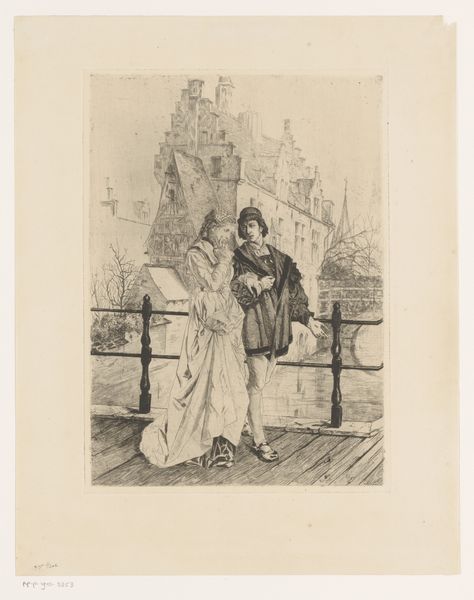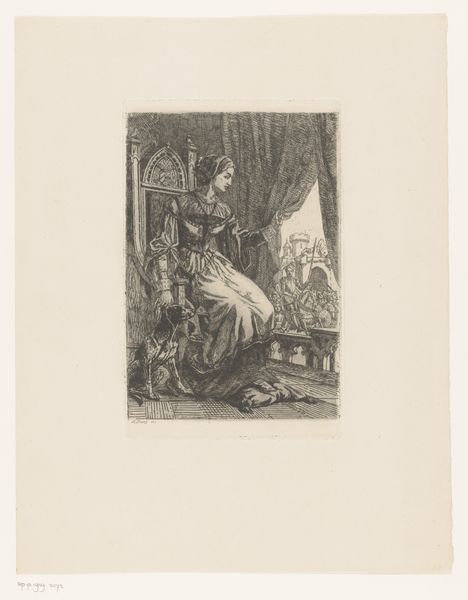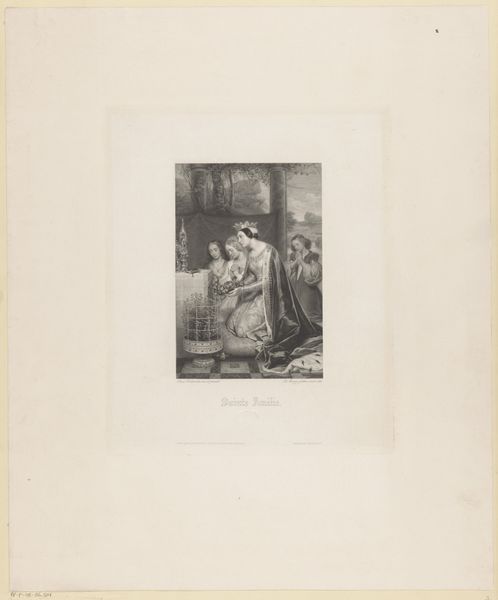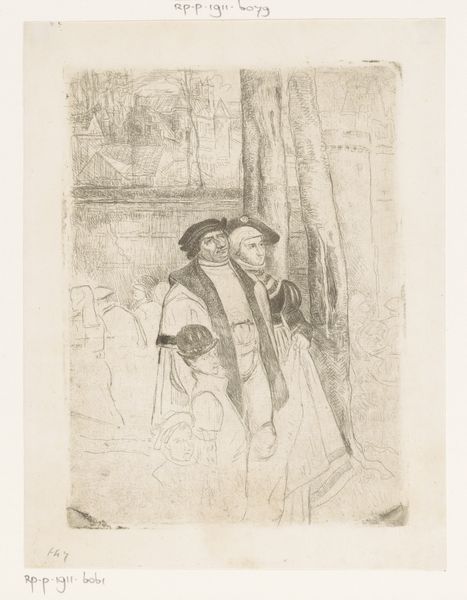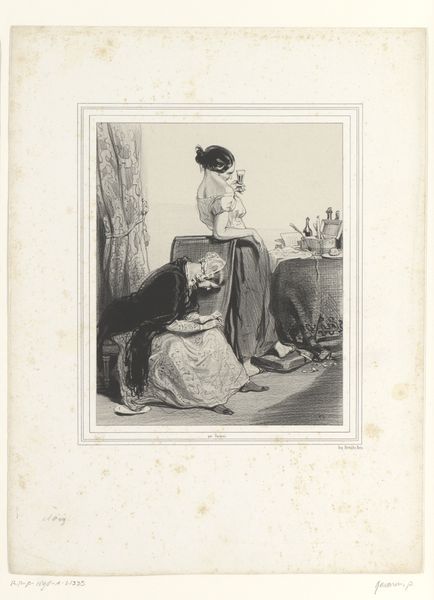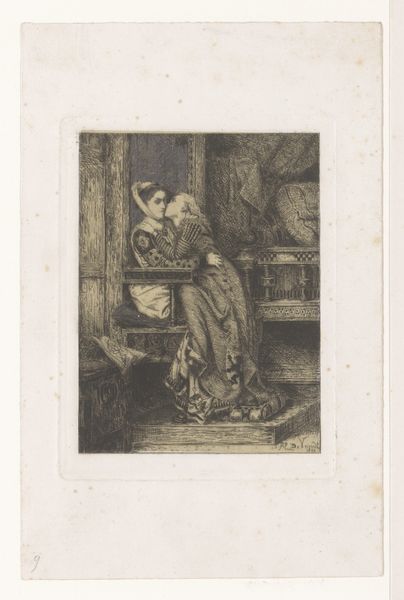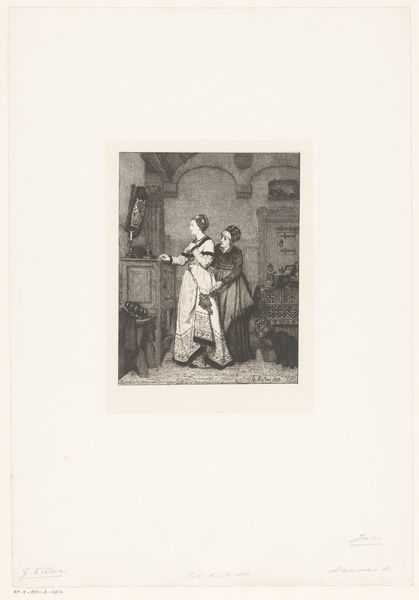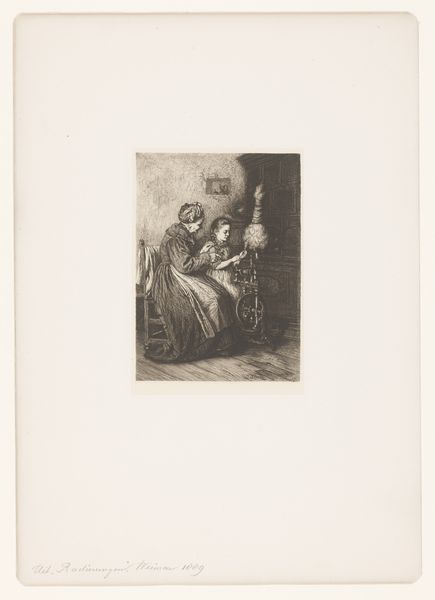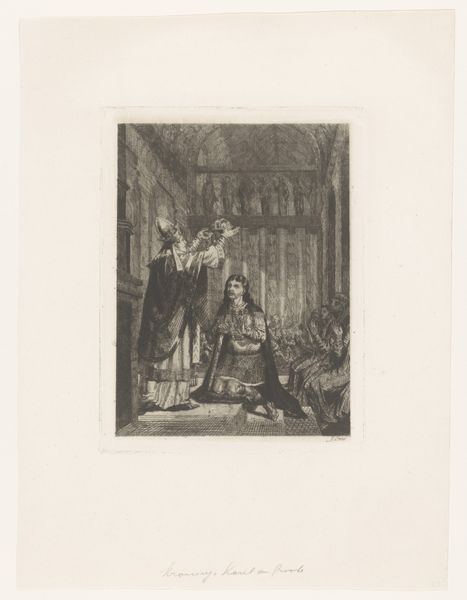
Dimensions: height 275 mm, width 200 mm
Copyright: Rijks Museum: Open Domain
Editor: So, here we have Willem Geets' etching, "Jong koppel loopt arm in arm over een brug", which translates to "Young couple walking arm in arm over a bridge," created around 1875. It has such a gentle, romantic quality about it, but also feels somewhat staged. What do you see in this piece, considering the period and context? Curator: Well, I think it's crucial to look at this work within the context of 19th-century Romanticism. Prints like these weren't just aesthetic objects. They served as a kind of visual communication, shaping ideas about love, relationships, and even national identity. Think about who might be buying and collecting these prints at the time. The rising middle class? Editor: That’s a good point. A print makes the art accessible for those who can’t purchase an original painting. It gives the artwork a wider distribution. And in that regard, how would that circulation have impacted the wider reception? Curator: Absolutely. The sentimental subject matter appealed to bourgeois sensibilities, but the implied wealth of their dress and leisure can also project certain values and ideas about social mobility. The figures almost pose, which can certainly feel "staged," as you said. But I think that pose serves a purpose: to present an idealized vision of a relationship within a specific social stratum. Consider too, the background setting with implied historical details of a gothic building. Where did such a revival of interest come from, at the time? Editor: Hmmm, I’m thinking a rise in historical studies. An awareness of regional differences, and the revival of classical elements in design. Curator: Precisely. In effect, these are visual cues the rising bourgeois class understood, in which shared narratives gave meaning and helped shape ideas and aspirations. Ultimately, they served as agents of the contemporary sociopolitical mores and norms of the era. Editor: That makes the image more loaded. I initially saw sweetness and romance, but now, looking more closely at this etching, it speaks to so much more of what's below the surface in society and history.
Comments
No comments
Be the first to comment and join the conversation on the ultimate creative platform.
